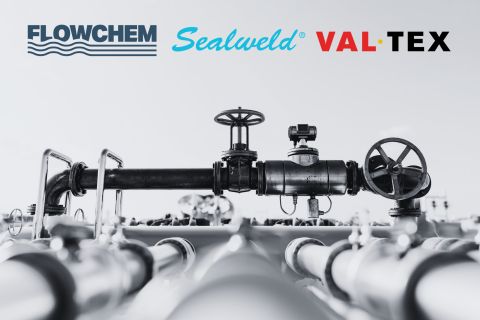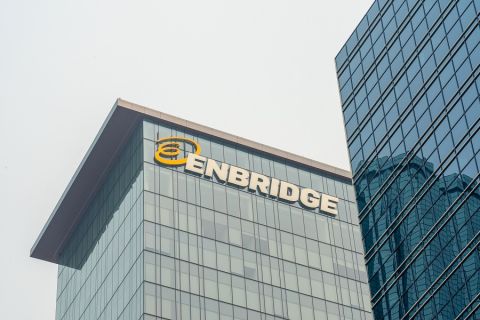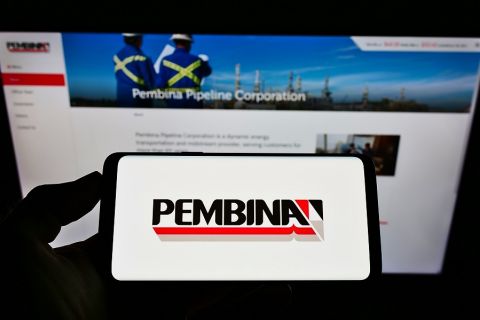Houston Engineer of the Year Ken Arnold recounts how the science and safety of offshore facilities have developed in the last few decades and how important professionalism is in achieving job satisfaction.
When Ken Arnold graduated from college and went to work for Shell Oil in the mid-1960s, very few engineers had been hired in the previous 10 years, and all of a sudden, the whole offshore Gulf of Mexico was looking them right in the face.
"I and my contemporaries were lucky to be there at that time," said the chief executive officer of Paragon Engineering Services. "Shell educated us quickly, and we grew, and we got it done. Today, the situation is very similar. We are at a point in history where we face huge technical challenges as well as huge demand, and the industry hasn't hired many engineers in a long time. The old guys need to mentor the new hires. It's an exciting time for young engineers - they will be given authority and responsibility way before they are probably able to exercise judgment. They will have to teach themselves and learn quickly from the old guys."
The science of facilities engineering
In the early days of the oil industry, very simple facilities stored the oil and vented the gas. There was not a lot of science or calculation involved. "A facilities engineer would only screw it up," Arnold quipped.
Then in the 1920s, chemical engineers figured out that propane and butane could be separated out of the gas and sold rather than vented, so facilities engineers were mostly doing gas engineering.
Real facilities engineering didn't start until after World War II, when offshore structures, high-pressure gas wells and produced water treatment required more complex facilities. These facilities engineers were mostly located in the production department.
"In the early 1980s, most engineers didn't understand how to size equipment properly," Arnold said. "I had gathered lots of vendor information and had developed internal guidelines with the best of them, but even so, our understanding was incomplete. So I spent my time during airplane flights and lonely nights in remote areas searching for common threads in all that information trying to understand the science underneath it all. As I look back on my career, it was often by questioning basic assumptions and digging deeper into the science that I got a better idea of the problem. What it all boiled down to was droplet settling, coalescence and shearing. This theory took the concept of retention time and extended it, and it's the basis of two textbooks I co-wrote, which are now in their second editions. The science of offshore facilities engineering is really modern, although the concepts have been known since 1947."
Facilities design flaws and safety
In 1988, 167 people died when the Piper Alpha platform in the North Sea exploded. Upon investigation, design flaws were identified, and since then, whole new systems have been designed for safety reasons, Arnold said.
This past year, Petrobras' billion dollar P-36 platform sank, and 12 people died. Arnold described the problem as poor judgment in locating a tank that could be overpressured in a leg. The platform had been producing 250,000 b/d of oil, which hurt the company more than the loss of the facilities themselves.
Arnold works to improve safety of designs
The first phase of Arnold's personal safety campaign was to participate in cross-industry committees to ensure design practices were as safe as possible. At Shell, he co-chaired the committee that helped design the API Recommended Practice 14A, B and C. "One of the things I am most proud of is API RP-14C on offshore safety shutdown," he said. The first draft of this proposed document centered on the failure mode effect and analysis (FMEA) method. Based on his own work, Arnold was able to convince the committee that this was not a practical approach because of widely varying results. He recommended the more generic approach of hazard analysis, and this approach was adopted in the final Recommended Practice.
The second phase of his offshore facilities safety campaign centered on process safety management in the late 1980s. Arnold saw the downstream side of the energy business had an emphasis on this kind of approach, but the upstream sector did not. He and others, including J. Frank Davis at Shell, wrote a lot of papers and lobbied the industry to adopt this approach, convincing the API to update RP-2G for offshore facilities using hazard analysis. Arnold headed the committee that wrote API RP-14J and served on the committee that authored API RP-75, which outlined the Safety & Environmental Management Program (SEMP) requirements for companies operating offshore. Along with the US Department of Energy and Taylor Energy of New Orleans, Paragon, under Arnold's guidance, prepared a sample SEMP and helped operators train their employees to comply with the new standard.
The third phase of offshore facilities safety evolution is just now beginning, Arnold said. This phase will incorporate human factors engineering, and he is actively promoting this approach through published papers and industry conferences. To illustrate, Arnold described how the Shell Malampaya platform was designed in Houston, but would be operated by Filipinos, and so the design engineers had to accommodate the placement of equipment and other man-machine interfaces to match the typical Filipino height and reach, which differs significantly from the typical Texan.
"The most intriguing part of human factors engineering is emerging, and that is to design the facility so that the natural human reaction is to do the right thing," Arnold said. There can be three different kinds of emergency shutdown on one platform: a button push, a lever pull and a valve to turn. This can be confusing at the wrong time such that a small accident can turn into a larger accident. "This third phase of design safety is at the same stage that the second phase was in 1989," Arnold said. Paragon Engineering Services is one of the first design companies to have a human factors engineering group in-house.
"The world has changed drastically in the past 10 years," Arnold said. "Offshore platforms that used to cost $1 million to $25 million now cost between $500 million and $2 billion. They are larger and more complex, and project cycle time significantly impacts project profitability. In fact, to date I haven't found a slow-track project. The way we run a project has become far more important than years ago. I'm trying to spread the gospel on project management, which just may make a bigger difference on project economics than new technology."
Houston will remain hot for facilities design
Houston is still considered the oil capital of the world, not because it has the oil, but because it has the oil know-how. "Houston has good technical capability," Arnold said, "but doing detail engineering is very expensive here. It costs half as much to do that work in Italy, and half again as much to do it in Southeast Asia. The engineers there are just as smart, and at some point, they will be able to do what we can do in Houston."
What Houston has going for it is a low-cost, efficient infrastructure system with a history of engineering and oil companies working together, Arnold said. "We've developed a special ability for conceptual design to define the project and expertise in specific areas of technology, such as flow assurance, subsea facilities and human factors engineering. Houston has the critical mass of expertise needed for world-scale projects.
"The challenge will be how to integrate Houston engineers with engineers in the host countries to create an integrated team. This doesn't have to be on one floor. What is needed is psychological integration, which means sharing processes and databases over the Internet while maintaining quality and efficiency for clients. The technology and the project management work processes are here in Houston, and Paragon will probably grow our Houston staff, but more detail engineering will be done overseas."
Recommended Reading
GeoPark, Vitol Sign Offtake Deal for Llanos 34 Block
2024-05-10 - Under the agreement, GeoPark will sell and deliver to Vitol a minimum of 20,000 bbl/d of oil from the Llanos 34 Block in Colombia, which GeoPark holds 45% working interest.
SCF Acquires Flowchem, Val-Tex and Sealweld
2024-03-04 - Flowchem, Val-Tex and Sealweld were formerly part of Entegris Inc.
Enbridge Closes First Utility Transaction with Dominion for $6.6B
2024-03-07 - Enbridge’s purchase of The East Ohio Gas Co. from Dominion is part of $14 billion in M&A the companies announced in September.
Pembina Cleared to Buy Enbridge's Pipeline, NGL JV Interests for $2.2B
2024-03-19 - Pembina Pipeline received a no-action letter from the Canadian Competition Bureau, meaning that the government will not challenge the company’s acquisition of Enbridge’s interest in a joint venture with the Alliance Pipeline and Aux Sable NGL fractionation facilities.
Global Partners Buys Four Liquid Energy Terminals from Gulf Oil
2024-04-10 - Global Partners initially set out to buy five terminals from Gulf Oil but the purchase of a terminal in Portland was abandoned after antitrust concerns were raised by the FTC and the Maine attorney general.





